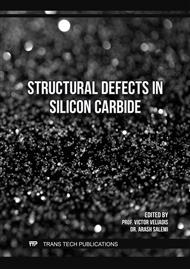p.1
p.7
p.13
p.21
p.29
p.35
p.43
p.49
Analysis of Trap Centers Generated by Hydrogen Implantation in 4H-SiC Bonded Substrates
Abstract:
In this study, we investigated the generation of trap centers through hydrogen implantation to understand its role in the suppression of forward bias degradation in 4H-silicon carbide (4H-SiC) bonded substrates. During the production of bonded substrates, hydrogen implantation is used for layer splitting. Transmission electron microscopy (TEM) observations revealed that the basal plane dislocation (BPD) in the bonded substrate did not extend into the Shockley-type stacking fault (SSF) and remained stable in the transferred layer below the epitaxial interface even under high forward current stress. Additionally, carrier lifetime, measured using microwave photoconductivity decay (μ-PCD), was considerably reduced by hydrogen implantation. Annealing at 1700°C reduced the implanted hydrogen to levels below the detection limit of secondary ion mass spectrometry (SIMS), yet the carrier lifetime remained short. Deep level transient spectroscopy (DLTS) revealed that, after annealing at 1700°C following hydrogen implantation, the concentration of the Z1/2 center increased by more than two orders of magnitude compared to pre-implantation levels. Trap centers, including the Z1/2 center, are believed to help prevent forward bias degradation in the bonded substrates by inhibiting the expansion of SSFs in the transferred layer.
Info:
Periodical:
Pages:
21-27
Citation:
Online since:
September 2025
Permissions:
Share:
Citation:


